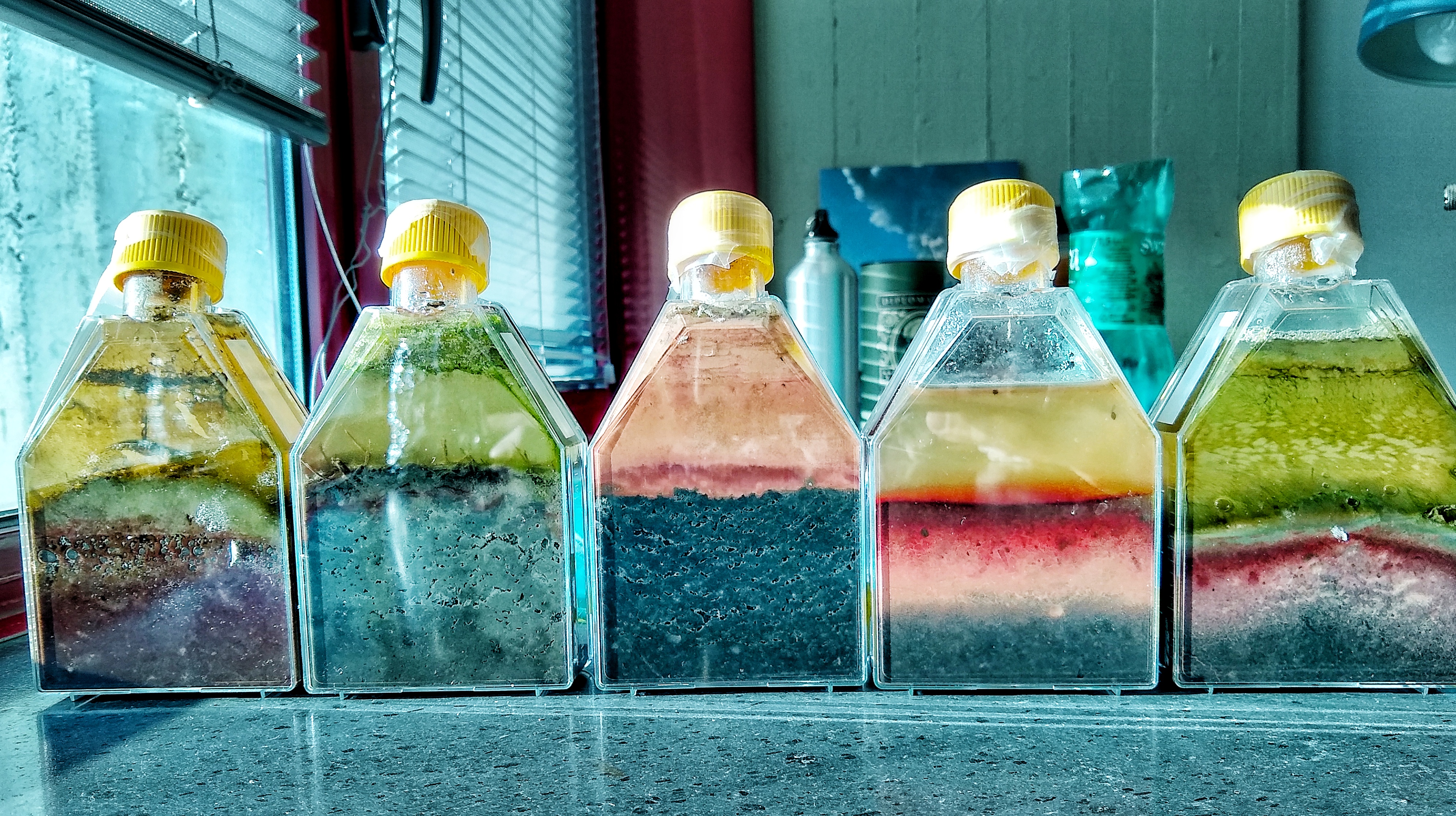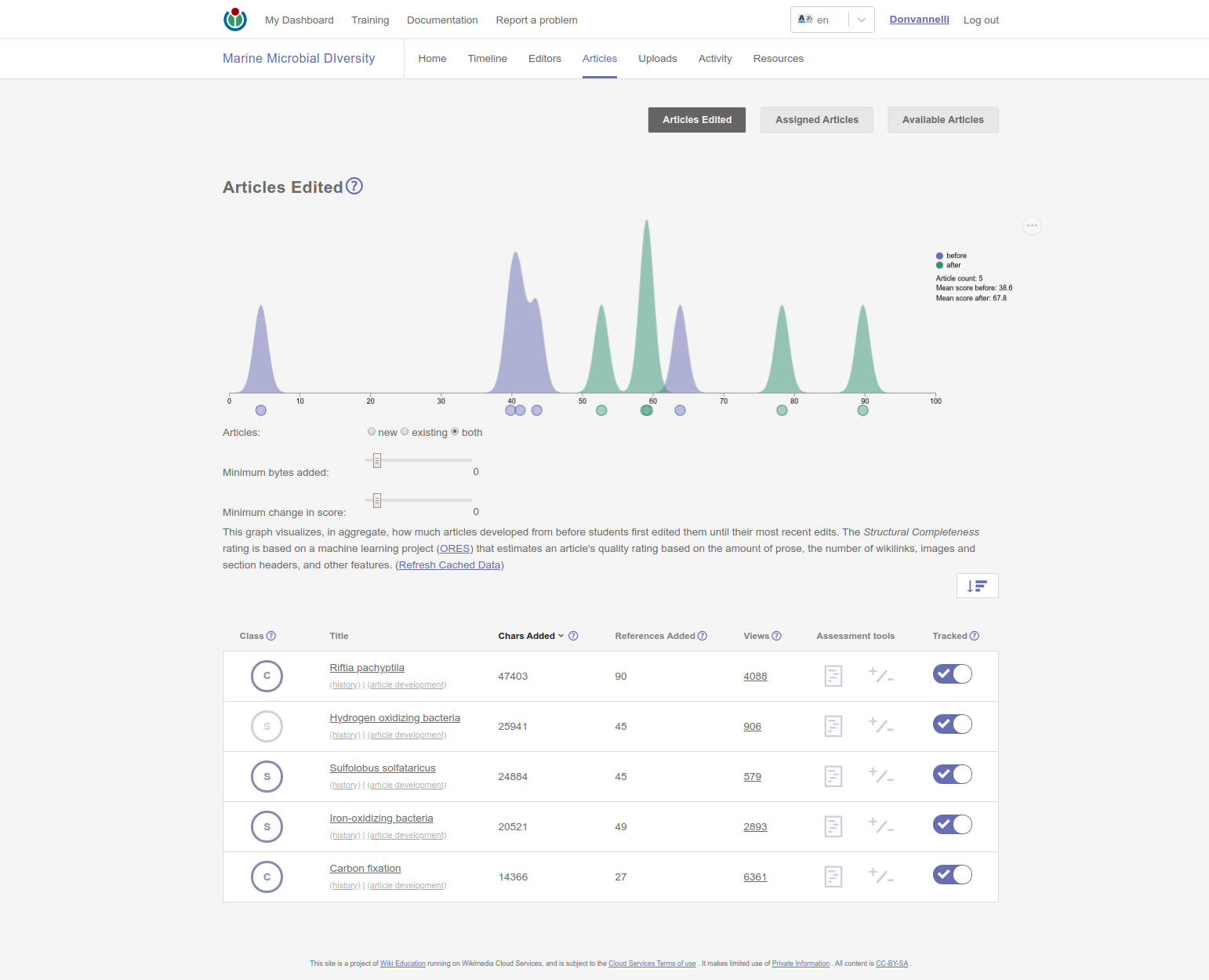Teaching
I feel extremely privileged to be able to teach specialized courses to the graduate students at the University of Naples. Here you’ll find information about the current and past courses, including elective classes I’ve designed over the years. For every course I’m working to upload all the pdf and course material for future reference.
A great idea would be to have a centralized repository where professors can exchange course material freely, like a GitHub of teaching. Or perhaps GitHub is the way to go? If you know something in this regard or have ideas you would like to discuss, drop me a line on twitter.
While teaching I generally like to keep my classes informal and have plenty of discussion (class size permitting). I usually assign several optional readings for students interested in going deeper, and we spend some time each class discussing the papers. I’ve been recently introducing the construction of Winogradsky columns as a way to do both class activities and outreach. Here a picture of some of our columns:

In some of my smaller classes (below 40 students) I request that the student contribute to Wikipedia by selecting a stub-class or start-class article in Marine or General Microbiology and improving it. This is usually accomplished in teams of 3-5 people, and we had great success over the last couple of years with my class in Marine Microbial Diversity, contributing to several topics. Here you can see an example of the stats relative to the 2020 Marine Microbial Diversity class contribution to Wikipedia. For a complete list of the articles contributed by year see below, or head directly to the program page on the Wikipedia dashboard.

Classes and Courses
- Microbiology of Extreme-Environments
- Microbial Metabolism and Habitability
- Marine Microbial Diversity
- Basic Stats and R course
- Environmental Metagenomic
- Applied Microbiology
- Microbial Genomics
Microbiology of Extreme Environments
| Location: | University of Naples Federico II | |
| Degree: | MSc in Biology of Extreme Environments | |
| Class size: | ~35 students | |
| Years active: | 2021, 2022, 2023 |
Introductory class providing a birds-eye view of the microbiology of extreme environments, the principal groups of extremophiles and a rundown of the main type if extreme environments present in our planet. The course provides also an introduction to the main field and laboratory techniques used to investigate microbial diversity in extreme ecosystems.
The class is a first year requirement for both curricula of the new master degree program in the Biology of Extreme Environments started in September 2021 for the first time.
Microbial Metabolism and Habitability
|Location: | |University of Naples Federico II | |Degree: | |MSc in Biology of Extreme Environments| |Class size: | |~35 students | |Years active: | |2022, 2023 |
This class explores the role of life in creating and maintaining planetary habitability, focusing on biogeochemical cycles and metabolic diversity. We also discuss geoengineering approaches to climate change and terraforming.
In 2022 the students are required to work in small groups to present a terraforming plan following very specific guidelines. The final project, in the form of a poster and presentation, is judged by a panel of external experts in the topics of astrobiology. Check out the student project page containing all the projects from 2022.
For 2023 there will be a dedicated page found on this dedicated page.
Marine Microbial Diversity
| Location: | University of Naples Federico II | |
| Degree: | MSc in Marine Biology | |
| Class size: | 20-40 students | |
| Years active: | 2016, 2019, 2020, 2021, 2022 |
I’ve been teaching Marine Microbial Diversity to the graduate student in the UNINA Marine Biology program since 2016. The course, entirely in English, provides an introduction to general marine microbiology to students with a diverse background, and therefore includes a broad recap of general microbiology concepts.
There are no recording available at the moment, but you can download the pdf of the slides (in English) from the course GitHub repository.
Basic Stats and R course
| Location: | University of Naples Federico II | |
| Degree: | Elective course | |
| Class size: | 30-50 students | |
| Years active: | 2019, 2020 |
This is an elective course I have designed to give very specific hand-on information to my team members and all the students and postdoc in my department. The course provides practical tools and consideration for the utilization of R and basic bioinformatic tools for the study of microbial diversity. It is not a comprehensive course on R or bioinformatic, but rather an entry point to get people started with practical analysis.
There are no recording available at the moment, but you can download the pdf of the slides (in English) from the course GitHub repository.
Environmental Metagenomic
| Location: | University of Naples Federico II | |
| Degree: | MSc in Biology | |
| Class size: | 20-40 students | |
| Years active: | 2021 |
Introductory class in Environmental Metagenomic for graduate students pursuing a Master Degree in Biology with a focus in environmental sciences. The class gives a recap of basic microbiology and microbial ecology concepts and then jumps into a 20 hours hand-on metagenomic analysis of publicly available datasets using web-based tools.
Recordings (in Italian, slides in English) are available on my YouTube channel and the couple of classes are embedded below. The teaching slides (in English) can be downloaded from the Environmental Metagenomic course GitHub repository.
Applied Microbiology
| Location: | University of Naples Federico II | |
| Degree: | MSc in Biology | |
| Class size: | 180-200 students | |
| Years active: | 2019, 2020 |
This class was designed to provide the students with a broad view of all the possible field of application of microbiology. We cover topics ranging from bioremediation to food microbiology and biological warfare. The class includes only 1-2 general lectures used as recap. I taught this class for two consecutive years before passing the course to a colleague.
The teaching slides (in English) can be downloaded from the course GitHub repository.
Microbial Genomics
| Location: | Rutgers University | |
| Degree: | MSc in Biology | |
| Class size: | 20-40 students | |
| Years active: | 2012 |
Grasuate class in microbial genetics at Rutgers University designed to provide a broad overview of the topic. No recordings or teaching material is available for this class.
Wikipedia Contributions
Here a list of the articles edited by the students as part of their assignment together with some basic stats regarding the added information. The complete data about our edits can be found in the dashboard of the Microbiology Teaching in Italy Wikipedia page.
| Article | Words Added | References added |
|---|---|---|
| Riftia pachyptila | 9160 | 90 |
| Hydrogen oxidizing bacteria | 5013 | 45 |
| Sulfolobus solfataricus | 4809 | 45 |
| Iron-oxidizing bacteria | 3965 | 49 |
| Carbon fixation | 2776 | 27 |
| Sulfur-reducing bacteria | 15290 | 135 |
| Beggiatoa | 8213 | 45 |
| Gammaproteobacteria | 7059 | 61 |
| Nitrosomonas | 5220 | 57 |
| Purple bacteria | 4688 | 29 |